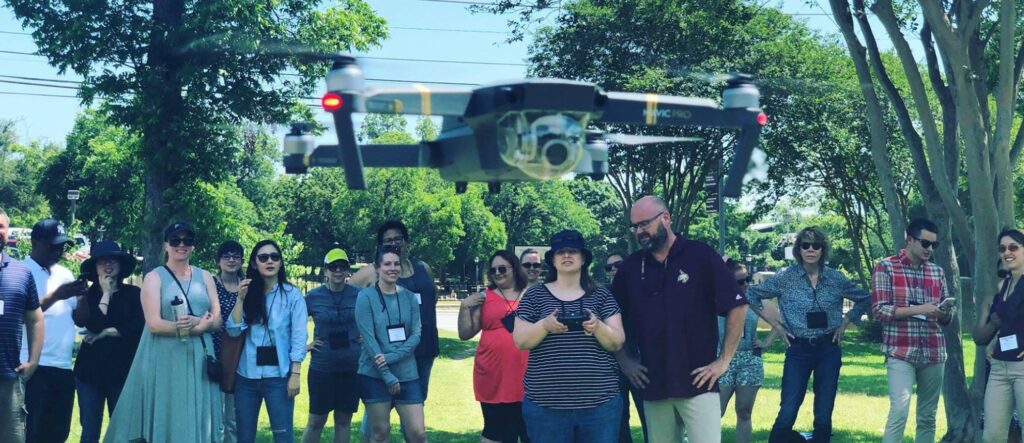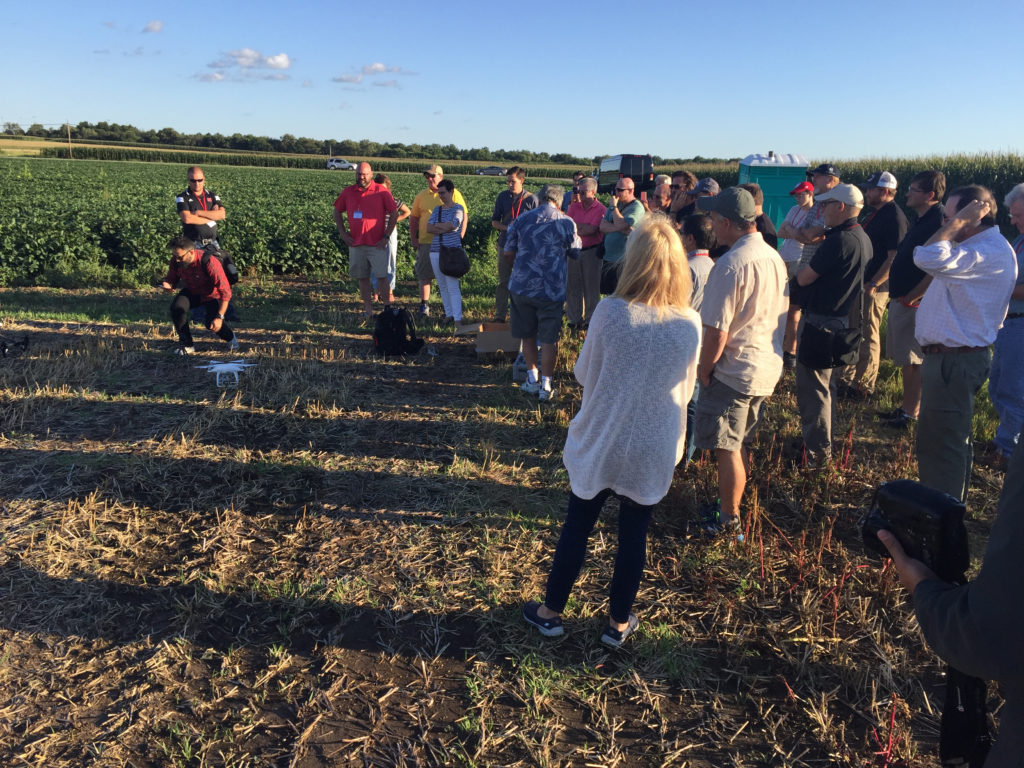Instructor: Dale Blasingame
Week of May 18

Description
This week we turn our attention to the skies – but not too far high in the sky. We’re talking about drones in this module and the incredible strides made with this technology in a short period of time. The idea of drone journalism and drone education is around five years old – so you’re still getting into this area in the early stages.
Personally, I came to academia from a TV news background, where we had ready access to a helicopter for aerial footage. So the idea behind drone journalism resonated quickly with me. The true, deep dive happened in August of 2016, when I flew to Nebraska to be part of the very first Drone Journalism Bootcamp, which was hosted by Matt Waite, the godfather of drone education.

Those three days of instruction left me feeling like I would never learn everything I needed. I’m here to tell you it all works out. Promise! In the four years since, I’ve created and taught a class on drone ethics and safety several times, just received a grant to create a new class on aerial photogrammetry and spoken on or organized nearly 10 panels about drone education at national and international conferences. You just have to dive in.
In the following video, I’ll walk you though the different types of drones, a brief explanation of the FAA’s Part 107 for commercial drone piloting and five of the main rules of Part 107.
Additional Resources and Examples
Watch: Safety and ethics are often top of mind, with good reason, when it comes to drone journalism. Matt Waite addressed this topic in a TEDx talk back in 2014. A lot has changed in the world of drones since this talk, but Matt set the stage for a lot of the discussions that came in the following years.
Read: Poynter’s Drone Journalism Ethics Policy
Watch: Ben Kreimer, one of Matt’s first drone students and a frequent collaborator with us here at Texas State, is one of the leading voices in using drones for 3D modeling and photogrammetry. Here’s his TEDx talk about his travels around the globe to build models with his drone. Again, this is a few years old, but it shows you how Ben thinks about this complex topic.
Explore: Ben’s 3D Model of Nairobi’s Dandora Dumpsite
Discussion Assignment
This week, we’ll join a conversation on Slack with you in the #drones channel about these questions:
- Have you ever flown a drone before? If so, when/where/why? If not, what are your thoughts about flying? Worried about safety? Privacy concerns? Are you nervous? Scared? It’s totally okay to be – but let’s talk about why you’re experiencing those emotions.
- How do you think drones could affect the research you’re already doing? Any data collection ideas? Photo or video storytelling needs? 3D modeling?
Studying for Part 107
With study materials involving drones, you often get what you pay for. There are a lot of not-so-good guides on YouTube and the web, so be careful.
If you’re interested in checking out my Part 107 course material, which is quite in-depth, just shoot me a message in Slack. I’m happy to share all my resources/videos with you.
Beyond that, the best resource for studying to take the Part 107 exam is from RemotePilot101.com. It’s $150 for a subscription, but it’s a lifetime subscription. Remote Pilot 101 is what I modeled my first drones class after, and I can’t speak highly enough about their instructional videos.
